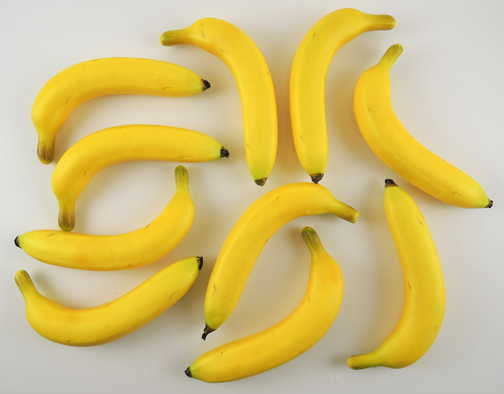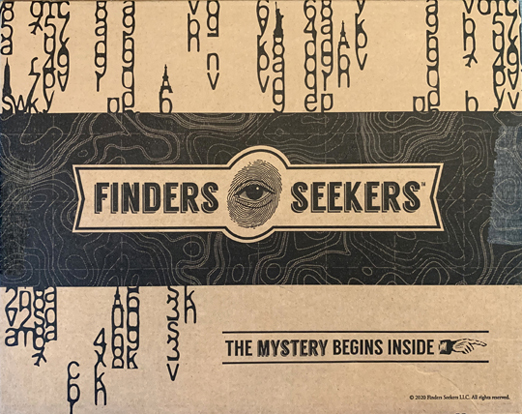
It should come as no surprise to anyone when I make this statement: KATIE ADORES ESCAPE ROOMS. Since her first in-person escape room during a birthday celebration, Katie has gone on to design many awesome literary escape rooms, both in-person (see here, here, and here), and virtual (see here, here, and here)! So it makes total sense for her to test drive Finders Seekers, a mailed-right-to-your-door escape room company. Take it away, Katie!
Yes, I adore escape rooms, both participating in and creating them! Not being able to partake in a live escape room because of the pandemic, I eagerly started searching for a worthy “at-home” alternative. That’s when I found Finders Seekers.
Finders Seekers is a monthly subscription where you receive a box in the mail with an escape room mystery adventure inside. The rooms are based on the culture and history of a different city somewhere in the world. The cities have covered the entire globe, including Sydney, Australia; Athens, Greece; Petra, Jordan; and San Francisco, California. There are a couple options for purchasing: you can sign up for a month-to-month service for $30, or you can select up to 3 levels of prepay spanning a year. There’s a gift option for sending a box to an escape room fanatic as well. You can cancel your subscription at any time.
Your “Escape Room in a Box” literally comes in a Finders Seekers marked box, which tells you that “The Mystery Begins Inside.” When you open the box, you find a “Classified” envelope with all the materials you’ll need to solve the escape room, along with a letter of specific instructions from Lucy Calder, Chief Seer of the Society of Seekers. Chief Seer Calder provides a website with links to different locations within the city, along with supporting information to help you solve the clues and puzzles.
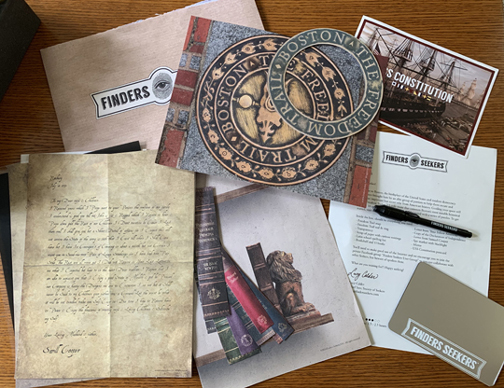
Our first Finders Seekers adventure took us up the East Coast to Boston, Massachusetts. From the deck in our backyard, my son and I raced along Boston’s Freedom Trail and visited 10 historical stops along the way. We were tested by 10 “patriots” at the sites and once we solved the riddle, we were given a token that helped us decipher the final mystery to the location of a stolen relic.
The descriptions and data provided within the website work hand-in-hand with the materials found inside the envelope. You definitely need both elements to figure out the solution. If you get stuck on a puzzle, never fear. The website provides additional hints (and even the final solution!) if you need help as you work through the escape room.
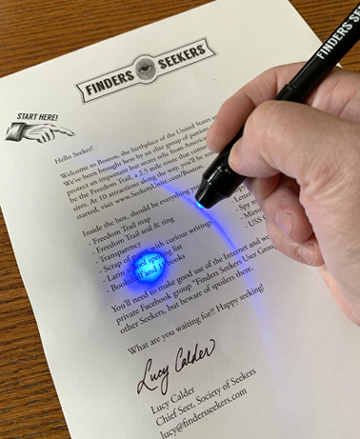
My 13 year-old son and I found some of the puzzles rather easy to figure out, whereas others required us to put in a bit more thought to figure out the solution. Some friends of ours did it with their daughter and her friends (ages 9-11) with success as well. Even though my son and I had decided to not use any of the extra hints, we did get help once because it was difficult to read part of the clue on our materials and the puzzle wasn’t terribly clear.
Otherwise we managed to solve the escape room entirely on our own. Together we traveled through the city, learned fun facts about one of the most historical places in the United States, and crossed the Boston Marathon Finish Line in a little over two hours!
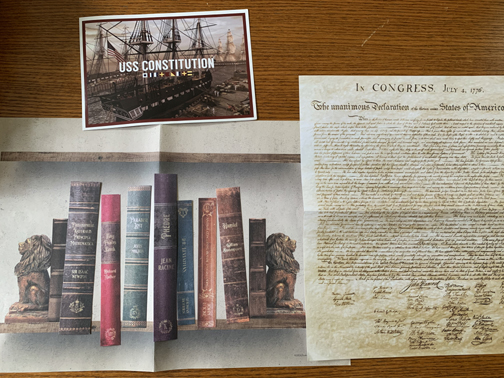
Our other Finders Seekers adventures had us jetting off to Paris, France and making various stops along the Metro, including the Catacombs and Moulin Rouge. We also have a mystery in Beijing, China waiting for us to solve.
For families who like game nights, for couples searching for a fun date activity, or for anyone who simply loves escape rooms (including yours truly), Finders Seekers is ideal. You finish the escape room in one sitting, rather than having to solve one section and then wait another month for the next part of the mystery. You can also do it entirely on your own! It provides enough challenges to foster excitement and intrigue for several enjoyable hours and introduces the adventurers to new places and cultures. Finders Seekers receives my highest recommendation!

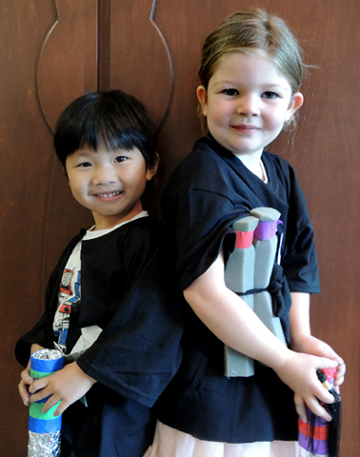
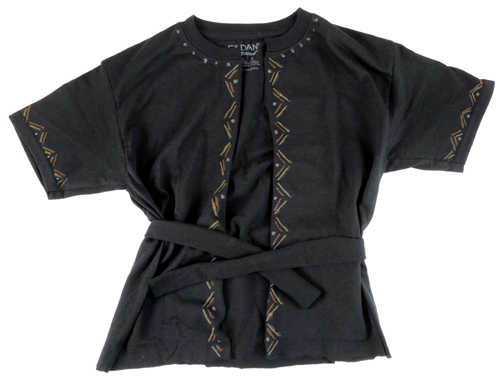 Our nunchucks are surplus foam book spine protectors
Our nunchucks are surplus foam book spine protectors 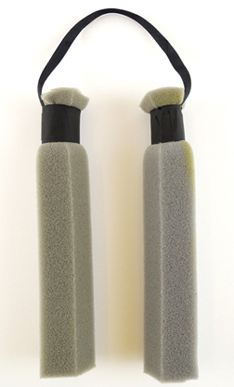 The throwing stars are of the classic origami variety (instructions
The throwing stars are of the classic origami variety (instructions 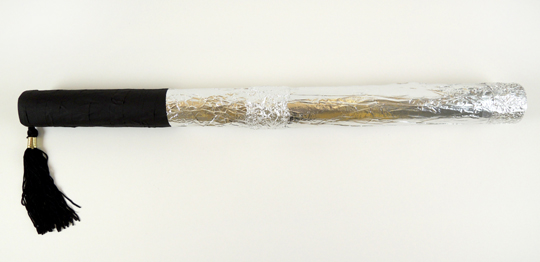 Once our ninja kids were ready, we gathered at the start of the obstacle course. First, ninjas walked the red masking tape tightrope to build balance skills:
Once our ninja kids were ready, we gathered at the start of the obstacle course. First, ninjas walked the red masking tape tightrope to build balance skills: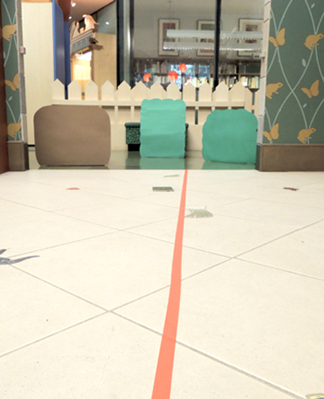 Next, they entered the forest to demonstrate their hiding abilities. Can you spot the ninja in this photo?
Next, they entered the forest to demonstrate their hiding abilities. Can you spot the ninja in this photo?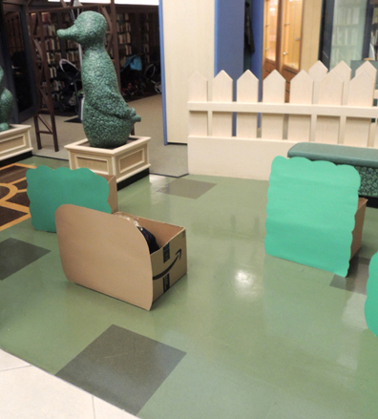 Then the ninja stealthily moved along a dark corridor and crawled through a tunnel…
Then the ninja stealthily moved along a dark corridor and crawled through a tunnel…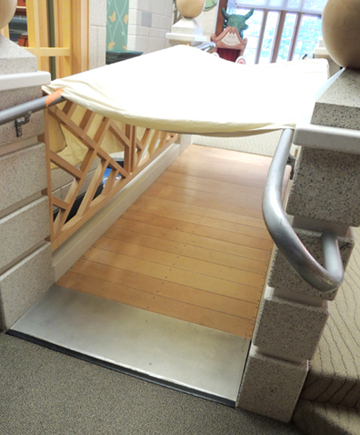 Finally emerging at our throwing star range, where they took aim at targets:
Finally emerging at our throwing star range, where they took aim at targets: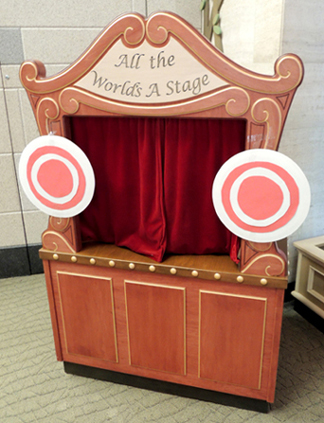 When the obstacle course was complete, the ninja headed over to the Shadow Blade stone, where they drew their swords under the proud eye of Sensei Katie!
When the obstacle course was complete, the ninja headed over to the Shadow Blade stone, where they drew their swords under the proud eye of Sensei Katie!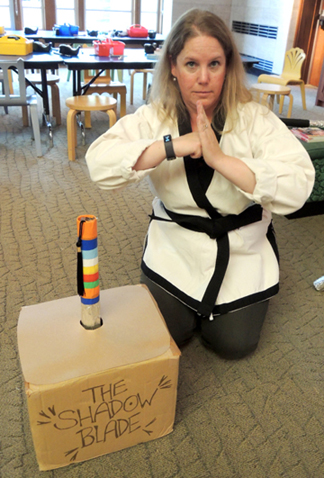 Fun fact: Katie has a black belt in Tae Kwon Do.
Fun fact: Katie has a black belt in Tae Kwon Do.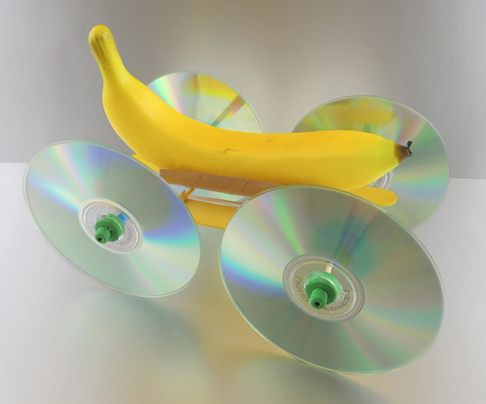 This banana’s going mobile, thanks to its CD wheels and rubber band engine! And why did we rig this fruit to roll? Four words: fusion, bananas, trolls, and technology. This feat of engineering was was constructed at
This banana’s going mobile, thanks to its CD wheels and rubber band engine! And why did we rig this fruit to roll? Four words: fusion, bananas, trolls, and technology. This feat of engineering was was constructed at 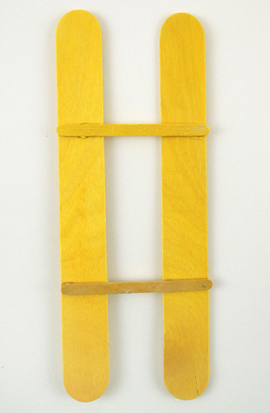 Next, cut a toilet paper tube in half, then hot glue it on top of the mini craft sticks:
Next, cut a toilet paper tube in half, then hot glue it on top of the mini craft sticks: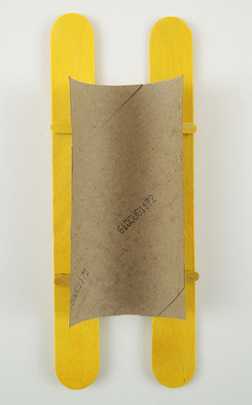 This creates your “banana saddle,” which keeps the bottom of your banana from interfering with the rubber band motor. Here’s a side view of the finished saddle:
This creates your “banana saddle,” which keeps the bottom of your banana from interfering with the rubber band motor. Here’s a side view of the finished saddle: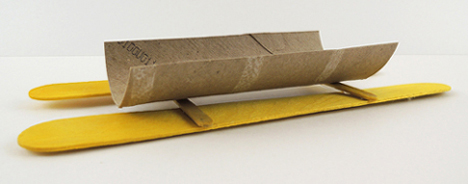 To create the rubber band motor, tightly wrap a brass fastener around the center of a 5.75″ piece of bamboo skewer. You want to prongs to be nice and tight, but make sure there’s still a little room under the head of the brass fastener for the rubber band.
To create the rubber band motor, tightly wrap a brass fastener around the center of a 5.75″ piece of bamboo skewer. You want to prongs to be nice and tight, but make sure there’s still a little room under the head of the brass fastener for the rubber band.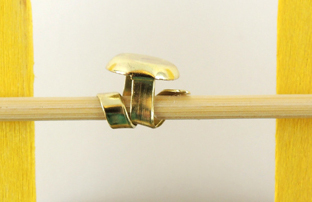 Cut a drinking straw into 3 pieces (two 1.5″ pieces, and one 3.75″ piece). Thread the 2 smaller pieces on either side of the bamboo skewer with the brass fastener. Then thread the larger straw piece onto the other bamboo skewer. Hot glue the straws directly to the jumbo craft sticks, then loop a rubber band onto the center of the longer straw. The underside of your car should now look like this:
Cut a drinking straw into 3 pieces (two 1.5″ pieces, and one 3.75″ piece). Thread the 2 smaller pieces on either side of the bamboo skewer with the brass fastener. Then thread the larger straw piece onto the other bamboo skewer. Hot glue the straws directly to the jumbo craft sticks, then loop a rubber band onto the center of the longer straw. The underside of your car should now look like this: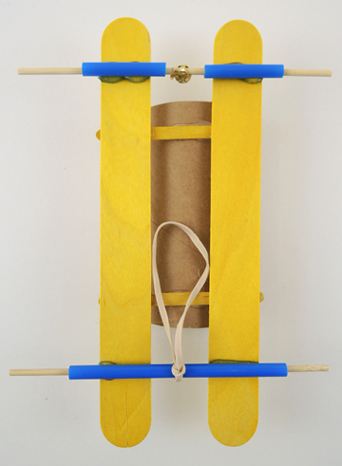 Later, you will wrap the rubber band around the head of the brass fastener, then wind the wheel and the axle to tighten the rubber band and prime the banana car’s “motor”:
Later, you will wrap the rubber band around the head of the brass fastener, then wind the wheel and the axle to tighten the rubber band and prime the banana car’s “motor”: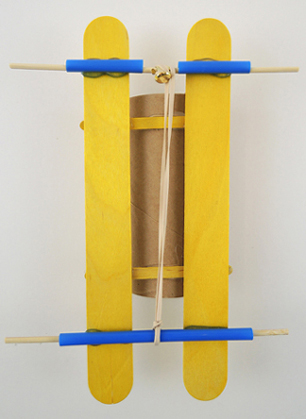 The car’s wheels are surplus CDs we obtained via donation from various University departments. We pushed a foam bead through the holes of each CDs, then hot glued them for extra security. Slide the wheels onto the ends of the bamboo skewers, then hot glue another foam bead to the outside of each wheel.
The car’s wheels are surplus CDs we obtained via donation from various University departments. We pushed a foam bead through the holes of each CDs, then hot glued them for extra security. Slide the wheels onto the ends of the bamboo skewers, then hot glue another foam bead to the outside of each wheel.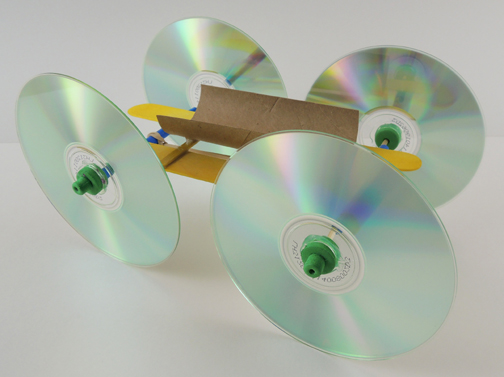 The car is ready to go…all you need is a banana! We actually went with FAKE bananas for this project (Amazon: 6 cost $11). Firstly, fake bananas don’t ripen inconveniently. Secondly, fake bananas are lighter, which meant that the cars would roll a little further.
The car is ready to go…all you need is a banana! We actually went with FAKE bananas for this project (Amazon: 6 cost $11). Firstly, fake bananas don’t ripen inconveniently. Secondly, fake bananas are lighter, which meant that the cars would roll a little further.